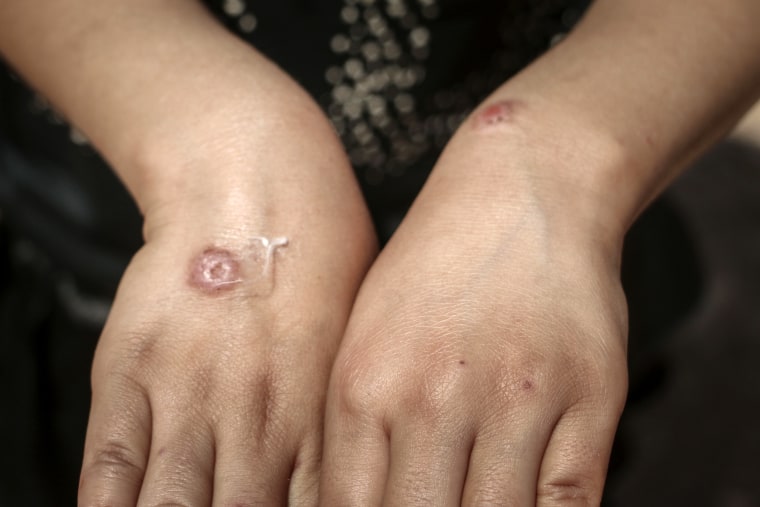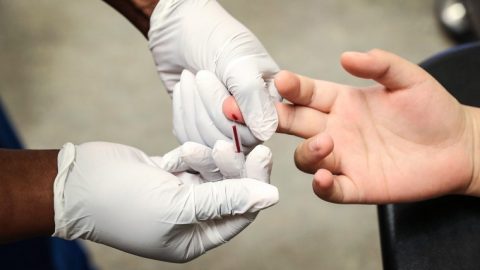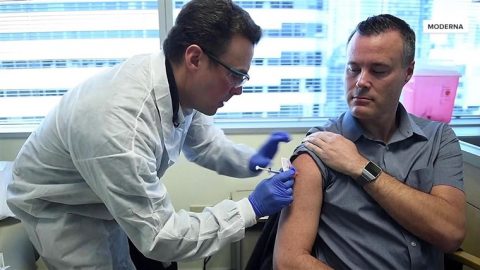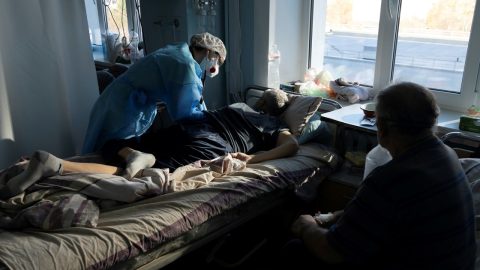A parasite capable of causing a disfiguring skin disease may be endemic in Texas and present in other southern states, according to the Centers for Disease Control and Prevention.
From 2005 to 2019, the CDC identified 1,222 cases in the U.S. that were positive for Leishmania, a parasite transmitted through the bites of infected female sandflies. The parasite can cause a disease called leishmaniasis, which usually results in skin sores that develop within a few weeks or months after a bite.
Leishmaniasis cases in the U.S. are typically found in people who traveled outside the country to tropical or subtropical climates — particularly those in the Middle East, central Asia, northern Africa and Latin America.
But the CDC said 86 of the Leishmania samples were from people with no recent history of travel outside the U.S.
The researchers also detected a unique strain of Leishmania that appeared to be genetically distinct from travel-related cases, suggesting it was spreading locally in the U.S.
“We cannot say that it is exclusive to Texas, but from the samples that were submitted to CDC, the majority were from Texas,” said Vitaliano Cama, a senior adviser with CDC’s Division of Parasitic Diseases and Malaria, who conducted the research.
The CDC researchers presented the data this week at the Annual Meeting of the American Society of Tropical Medicine and Hygiene in Chicago.
Dr. Mary Kamb, a CDC epidemiologist also involved in the research, said the findings are mostly relevant to healthcare providers and don’t suggest a serious public health risk.
“We need to increase the awareness among clinicians, dermatologists, infectious disease doctors or general practitioners,” she said.
In addition to the Texas cases, Kamb said, the CDC has received anecdotal reports of locally acquired leishmaniasis in Florida, but the cases haven’t been confirmed yet. Occasional cases have also been detected in Oklahoma and Arizona.
“Our understanding of leishmaniasis acquired in the U.S. is still really evolving,” said Joshua Lieberman, assistant director of the molecular microbiology clinical laboratory at UW Medicine, who was not involved in the research. “It’s not clear to me whether the true rate of new infections is increasing or we’re just getting better at detecting it, or both.”
Leishmania remains uncommon in the U.S., he added.
“For the general public, if you’re not traveling to endemic areas, your risk is vanishingly small,” Lieberman said.
However, both Lieberman and Kamb noted that some cases may go undetected without proper surveillance.
Kamb said sandflies are found in several southern states, and many parts of the U.S. have warm temperatures and woodland or forested areas that could support the insect populations.
But Texas is the only state that requires health professionals to report leishmaniasis cases to its health department, and there is no national requirement to report the disease to the CDC.
“For states outside Texas, it might be useful to consider making leishmaniasis reportable, but we don’t have very much data from other states suggesting this is a problem,” Kamb said.
How to identify and treat leishmaniasis
Lieberman said nearly all locally acquired leishmaniasis cases in the U.S. belong to a species called Leishmania mexicana, which produces skin lesions that often start out as tiny, painless bumps and may develop into ulcers.
The lesions frequently disappear on their own and may not require treatment, Lieberman said — though doctors can prescribe topical therapies if needed.

The strain identified in this week’s CDC presentation is a version of Leishmania mexicana, meaning cases should be relatively mild.
A different parasite, Leishmania infantum, can cause a more severe form of leishmaniasis that travels to internal organs and results in 20,000 to 30,000 deaths globally each year, according to the World Health Organization.
Sandflies pick up the parasite by feeding on infected dogs, so researchers worry about Leishmania infantum spreading in the U.S. via dogs imported from other countries.
Lieberman said treatment is available for severe cases as well, but the medications can be difficult for people to tolerate.
“The good news is treatment is going to be much more mild for the disease type that we’re seeing in the U.S,. but for returning travelers who may have more severe disease or other types of infections that go to organs or go to the insides of the nose and the mouth, those can require toxic drugs,” he said.
Though the risk of leishmaniasis in the U.S. is low, people can take measures to avoid getting bitten by sandflies, Kamb said.
“It’s the usual things you do to avoid insect bites,” she said. “If you’re walking in the woods or hiking, wear long pants or long-sleeve shirts and use insect repellent.”









Recent Comments